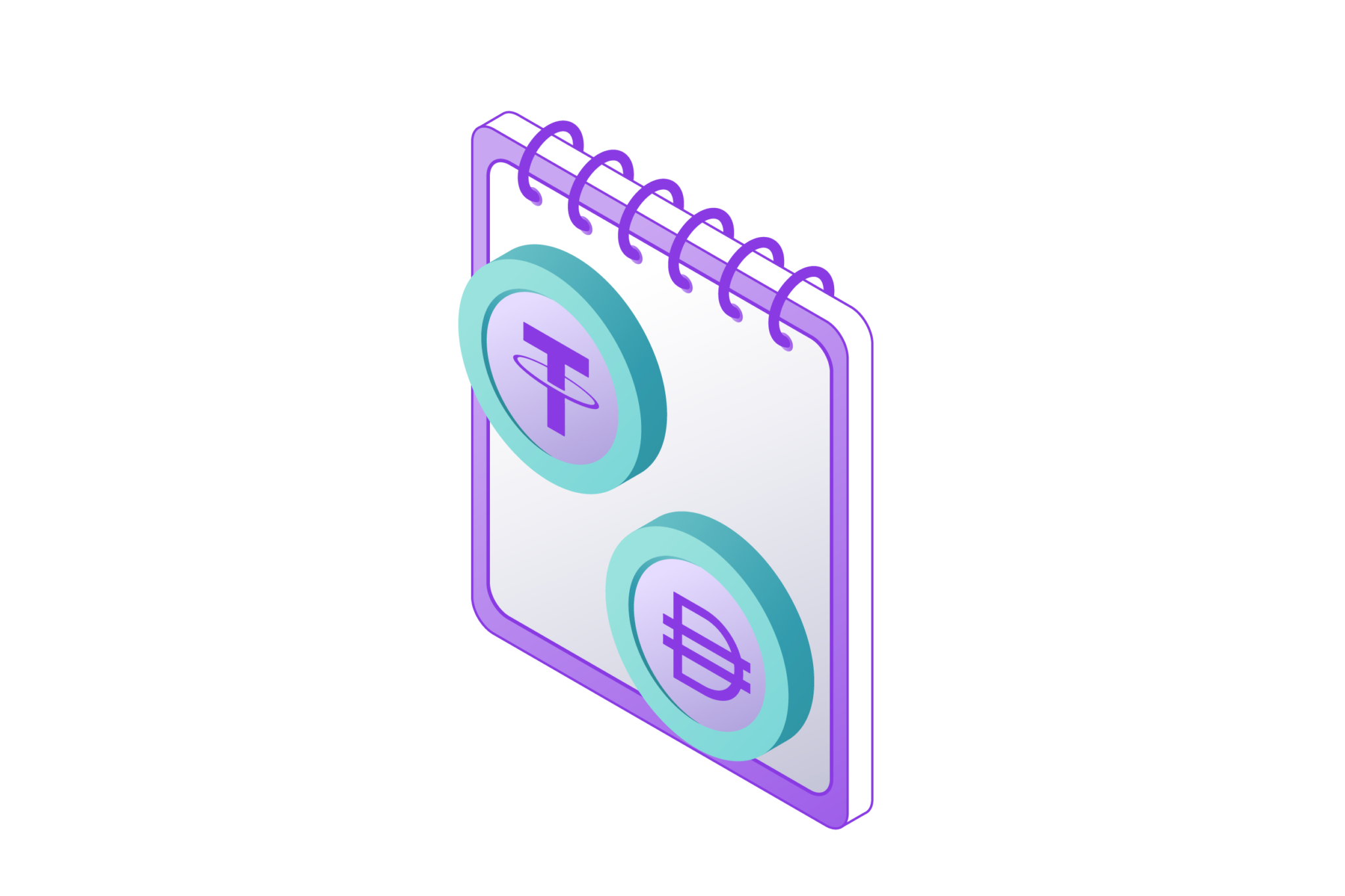
Stablecoins have emerged as a crucial element in the world of cryptocurrency, offering the stability that other digital assets often lack. As we move into 2025, the landscape of stablecoins continues to evolve, with new entrants and innovations making their mark. This updated list aims to guide you through the top stablecoins to consider this year.
HeLa HLUSD, a new and promising stablecoin, leads our list for 2025. This stablecoin has garnered attention for its unique features and strong backing. Alongside HLUSD, other well-known stablecoins continue to play significant roles in providing stability and facilitating transactions in the crypto market.
In this article, we’ll explore what stablecoins are, highlight the top stablecoins for 2025, discuss their benefits and risks, and look into future trends that could shape the stablecoin market. Whether you’re a seasoned investor or new to the world of cryptocurrencies, this guide will provide valuable insights to help you navigate the stablecoin landscape.
What is Stablecoin?

Stablecoins are a type of cryptocurrency designed to maintain a stable value by being pegged to a reserve of assets, typically a fiat currency like the US dollar, or commodities like gold. This stability makes them an attractive option for investors and users who seek to avoid the volatility commonly associated with cryptocurrencies like Bitcoin and Ethereum.
The primary purpose of stablecoins is to provide a digital alternative to traditional currencies while preserving the benefits of blockchain technology. These benefits include faster transaction times, lower fees, and enhanced security. Stablecoins can be used for various purposes, such as trading on cryptocurrency exchanges, making international payments, and serving as a store of value.
Also Read: What is Intrinsic Value? Understanding the Core Concept
There are different types of stablecoins, each with its own mechanism for maintaining stability. Fiat-collateralized stablecoins are backed by a reserve of fiat currency, ensuring that each stablecoin issued is supported by an equivalent amount of money held in reserve. Crypto-collateralized stablecoins are backed by other cryptocurrencies, often over-collateralized to account for market volatility. Finally, algorithmic stablecoins use smart contracts and algorithms to control the supply and demand, maintaining their value without direct asset backing.
Top 10 Stablecoins to Consider in 2025

Stablecoins have become a cornerstone in the cryptocurrency ecosystem, offering a blend of stability and liquidity. Whether you’re looking to hedge against market volatility, facilitate seamless cross-border transactions, or simply store value, the right stablecoin can make all the difference. Here, we explore the top 10 stablecoins to consider in 2025, each standing out for their stability, transparency, and utility in the ever-expanding digital economy.
1. HeLa (HLUSD)
HeLa HLUSD is a newly launched stablecoin that promises exceptional stability and security. Pegged 1:1 with the US dollar, HeLa HLUSD leverages cutting-edge blockchain technology to ensure transparency and reliability. It is designed to offer users a seamless experience in transactions and investments, making it an attractive option for both new and seasoned investors. HeLa HLUSD has quickly gained recognition for its robust infrastructure, ease of use, and strong backing, positioning it as the top stablecoin for 2024.
2. Tether (USDT)
Tether (USDT) has been a staple in the stablecoin market since its inception in 2014. Pegged to the US dollar, each USDT token is backed by equivalent reserves, although there has been some controversy regarding the transparency of these reserves. Despite these concerns, Tether remains immensely popular due to its widespread acceptance and high liquidity. It is frequently used for trading and as a medium of exchange on various cryptocurrency exchanges, making it a vital component of the crypto ecosystem.
3. USD Coin (USDC)
USD Coin (USDC) is a stablecoin known for its commitment to transparency and regulatory compliance. Issued by the Centre consortium, which includes industry giants like Circle and Coinbase, USDC is fully backed by US dollars held in reserve. This ensures that each USDC token is redeemable for one US dollar, providing users with a reliable and secure digital asset. USDC’s regular audits and clear financial practices have made it one of the most trusted stablecoins on the market.
4. Binance USD (BUSD)
Binance USD (BUSD) is a fiat-backed stablecoin issued by Binance in partnership with Paxos. Approved by the New York State Department of Financial Services (NYDFS), BUSD is designed to maintain a 1:1 value with the US dollar. Its seamless integration with the Binance exchange provides users with high liquidity and ease of use, making it an ideal choice for trading and transactions. BUSD’s regulatory compliance and robust infrastructure further enhance its appeal.
5. Dai (DAI)
Dai (DAI) is a decentralized stablecoin governed by the MakerDAO protocol. Unlike most stablecoins, DAI is not backed by fiat currency but by a mix of other cryptocurrencies. This makes it a unique and innovative option in the stablecoin market. DAI maintains its peg to the US dollar through smart contracts and collateralized debt positions, ensuring its value remains stable. Its decentralized nature and transparency make DAI a popular choice among crypto enthusiasts who prefer trustless financial systems.
6. TrueUSD (TUSD)
TrueUSD (TUSD) is a fiat-backed stablecoin known for its transparency and regulatory compliance. Issued by TrustToken, TUSD undergoes regular third-party attestations to verify that each token is fully backed by US dollars. This ensures a stable value and enhances user confidence in the coin’s reliability. TrueUSD is widely accepted on various exchanges and provides a secure option for users looking to mitigate the volatility of other cryptocurrencies.
7. Pax Dollar (USDP)
Pax Dollar (USDP), issued by Paxos, is designed to maintain a stable value by being fully backed by US dollars. Known for its regulatory compliance and transparent operations, USDP offers a secure and reliable option for investors. It operates on the Ethereum blockchain and provides a 1:1 ratio with the US dollar, ensuring users can trust its value. Pax Dollar’s focus on security and stability makes it a solid choice for those looking to invest in stablecoins.
8. First Digital USD (FDUSD)
First Digital USD (FDUSD) is a stablecoin that offers reduced transaction costs and improved efficiency. It is designed to ensure that the reserves align with or surpass the total amount of stablecoins in circulation, providing users with a secure and stable digital asset. FDUSD’s commitment to transparency and security makes it an attractive option for those looking to leverage the benefits of stablecoins without the typical risks associated with cryptocurrency.
9. Magic Internet Money (MIM)
Magic Internet Money (MIM) is a stablecoin introduced by the Abracadabra Money platform. It maintains its peg to the US dollar through a decentralized protocol, offering users a blend of stability and decentralized finance (DeFi) opportunities. MIM has gained popularity for its innovative approach and the unique financial products available on the Abracadabra platform. This makes it a reliable choice for those seeking stability in the often-volatile cryptocurrency market.
10. Decentralized USD (USDD)
Decentralized USD (USDD), issued by the TRON DAO Reserve, is a stablecoin designed to offer a decentralized digital asset that is pegged to the US dollar. It is supported by a variety of cryptocurrencies, ensuring its stability and security. USDD is used for various purposes, including payments, trading, and as a store of value, making it a versatile option in the stablecoin market.
Benefits of Using Stablecoins

Stablecoins offer several benefits that make them an attractive option for both individual users and institutional investors. Here are some key advantages of using stablecoins:
1. Stability
The primary benefit of stablecoins is their ability to maintain a stable value, which is typically pegged to a fiat currency like the US dollar. This stability makes them a reliable medium of exchange and store of value, reducing the risk of significant price fluctuations that are common with other cryptocurrencies like Bitcoin and Ethereum. For example, stablecoins like Tether (USDT) and USD Coin (USDC) are designed to hold their value at a 1:1 ratio with the US dollar, providing a predictable and stable investment.
2. Speed and Efficiency of Transactions
Stablecoins leverage blockchain technology to facilitate faster and more efficient transactions compared to traditional banking systems. Transactions can be completed in minutes, regardless of the geographical location of the parties involved. This is particularly beneficial for cross-border transactions, which often involve lengthy processing times and high fees when using conventional banking methods.
3. Lower Transaction Fees
Using stablecoins can significantly reduce transaction costs. Traditional financial systems often impose various fees for transfers, especially for international transactions. Stablecoins, on the other hand, offer a cost-effective alternative with lower fees, making them an appealing option for businesses and individuals who need to send or receive money across borders.
4. Accessibility and Financial Inclusion
Stablecoins provide financial services to individuals and businesses who may not have access to traditional banking systems. This is especially important in developing countries where banking infrastructure is limited. By using stablecoins, people can participate in the global economy, transact in stable currencies, and protect their assets from local currency volatility.
5. Integration with Decentralized Finance (DeFi)
Stablecoins play a crucial role in the burgeoning field of decentralized finance (DeFi). They are commonly used as collateral in DeFi protocols, enabling users to lend, borrow, and earn interest on their assets without the need for intermediaries. This integration opens up new financial opportunities and services that are more transparent and accessible compared to traditional financial systems.
6. Enhanced Transparency and Security
Many stablecoins, such as USDC and TrueUSD, emphasize transparency by undergoing regular audits and publishing reports on their reserves. This transparency helps build trust among users, ensuring that each stablecoin is fully backed by its corresponding fiat currency. Additionally, the use of blockchain technology enhances security, making transactions immutable and resistant to fraud.
7. Hedge Against Volatility
Investors use stablecoins as a hedge against the volatility of other cryptocurrencies. During periods of market uncertainty, they can convert their holdings into stablecoins to preserve value. This makes stablecoins a strategic tool for managing risk in a diversified crypto portfolio.
The benefits of stablecoins extend beyond their stability, offering significant advantages in terms of transaction speed, cost efficiency, accessibility, and integration with innovative financial systems like DeFi. Their role in enhancing financial inclusion and providing a reliable hedge against volatility underscores their growing importance in the cryptocurrency ecosystem.
Risks Associated with Stablecoins
While stablecoins offer numerous benefits, they also come with certain risks that users and investors should be aware of. Here are some of the key risks associated with stablecoins:
1. Regulatory Uncertainty
One of the primary risks facing stablecoins is regulatory uncertainty. As the cryptocurrency market evolves, governments and regulatory bodies around the world are still developing their policies and frameworks. This lack of clarity can lead to sudden regulatory changes that could impact the legality and usability of stablecoins. For instance, regulatory scrutiny on Tether (USDT) regarding its reserves has highlighted potential vulnerabilities and the need for clear regulatory oversight.
2. Reserve Transparency
The stability of a stablecoin depends heavily on the transparency and integrity of its reserves. If a stablecoin issuer fails to maintain adequate reserves or provides false information about its backing, it can lead to a loss of trust and potential “depegging,” where the stablecoin’s value diverges from its intended peg. Tether (USDT) has faced criticism over the transparency of its reserves, causing concerns about its ability to maintain its value during market stress.
3. Counterparty Risk
Stablecoins issued by centralized entities are subject to counterparty risk, where the stability of the coin depends on the financial health and operational integrity of the issuing organization. If the issuer faces financial difficulties, legal challenges, or operational failures, it could jeopardize the value and redemption of the stablecoin. This risk is evident in fiat-backed stablecoins like USDC and BUSD, which rely on the issuing company’s ability to manage and safeguard their reserves.
4. Technology and Security Risks
Stablecoins, like all cryptocurrencies, are subject to technological risks, including vulnerabilities in the underlying blockchain technology and smart contracts. Hacking, security breaches, and technical failures can lead to loss of funds or disruption of services. For example, algorithmic stablecoins like DAI rely on complex smart contracts that, if exploited, could lead to significant financial losses.
5. Market Risks
The value of stablecoins can be affected by broader market conditions, including liquidity and demand. During periods of high market volatility or economic instability, even well-backed stablecoins can face challenges in maintaining their peg. Additionally, over-collateralized stablecoins like DAI may struggle if the value of their collateral drops significantly, leading to potential instability.
6. Depegging Risk
Depegging occurs when a stablecoin loses its value relative to the asset it is supposed to be pegged to. This can happen due to insufficient reserves, lack of investor confidence, or external market pressures. Depegging can cause significant financial losses for holders and disrupt the stablecoin’s use in transactions and trading.
While stablecoins provide stability and numerous benefits within the cryptocurrency ecosystem, it is crucial to be aware of the associated risks. Regulatory uncertainty, reserve transparency, counterparty risk, technological vulnerabilities, market risks, and depegging are all factors that can impact the value and reliability of stablecoins. Understanding these risks is essential for making informed decisions about using and investing in stablecoins.
Also Read: What is Buy Side Liquidity and Its Role in Market Dynamics?
Future Trends in Stablecoins
As stablecoins continue to evolve and grow in popularity, several trends are expected to shape their future. Here are some of the key trends to watch for in the stablecoin space:
1. Increased Regulatory Oversight
With the rapid growth of stablecoins, regulatory bodies around the world are paying closer attention to this sector. Increased regulatory oversight is expected to bring more transparency and security to the stablecoin market. Governments and financial regulators are working on frameworks to ensure that stablecoins are properly backed and that issuers adhere to strict guidelines. This trend is likely to enhance trust and stability in the stablecoin ecosystem.
2. Adoption by Traditional Financial Institutions
Traditional financial institutions are beginning to recognize the potential of stablecoins for improving transaction efficiency and reducing costs. Banks and payment processors are exploring ways to integrate stablecoins into their operations. This trend could lead to more widespread use of stablecoins in everyday financial transactions, bridging the gap between traditional finance and the cryptocurrency world.
3. Growth of Decentralized Finance (DeFi)
Stablecoins play a crucial role in the DeFi ecosystem, serving as collateral for loans, facilitating decentralized exchanges, and providing stable assets for yield farming. As DeFi continues to grow, the demand for stablecoins is expected to increase. Innovations in DeFi protocols and applications will likely drive further adoption and use of stablecoins, enhancing their utility and importance in the crypto market.
4. Expansion of Use Cases
The use cases for stablecoins are expanding beyond trading and payments. They are increasingly being used for remittances, savings, lending, and even as a means of accessing global markets. Stablecoins offer a stable and efficient alternative for transferring value across borders, making them attractive for various financial applications. This expansion of use cases will likely drive further adoption and integration of stablecoins into diverse economic activities .
5. Development of Central Bank Digital Currencies (CBDCs)
Many central banks are exploring the development of their own digital currencies, known as CBDCs. These digital currencies aim to provide the benefits of stablecoins, such as fast and secure transactions, while being fully backed and regulated by central banks. The introduction of CBDCs could complement and compete with existing stablecoins, potentially reshaping the digital currency landscape.
6. Enhanced Security and Technology
Advancements in blockchain technology and security protocols are expected to enhance the safety and efficiency of stablecoins. Improved smart contracts, better auditing practices, and robust cybersecurity measures will help mitigate risks and build greater trust in stablecoins. Ongoing technological innovation will ensure that stablecoins remain a reliable and secure option for users and investors.
Conclusion
Stablecoins have emerged as essential assets in the cryptocurrency market, offering stability and efficiency amidst the volatility of other digital currencies. Key players like Hela HLUSD, Tether (USDT), and USD Coin (USDC) lead the way, providing reliable and transparent options for users and investors. The benefits of stablecoins, such as reduced transaction fees, faster processing times, and financial inclusion, make them attractive for various applications, from everyday transactions to decentralized finance (DeFi). However, risks like regulatory uncertainty, reserve transparency issues, and technological vulnerabilities must be carefully managed to maintain their integrity and trustworthiness.
Looking ahead, the stablecoin landscape is set to evolve with increased regulatory oversight, greater integration with traditional financial institutions, and advancements in blockchain technology. The development of Central Bank Digital Currencies (CBDCs) and the expanding role of stablecoins in DeFi highlight their growing importance in the global financial system. By understanding the benefits and risks, users can make informed decisions about leveraging stablecoins to navigate the digital economy securely and efficiently.
Disclaimer: The information provided by Quant Matter in this article is intended for general informational purposes and does not reflect the company’s opinion. It is not intended as investment advice or a recommendation. Readers are strongly advised to conduct their own thorough research and consult with a qualified financial advisor before making any financial decisions.

Joshua Soriano
As an author, I bring clarity to the complex intersections of technology and finance. My focus is on unraveling the complexities of using data science and machine learning in the cryptocurrency market, aiming to make the principles of quantitative trading understandable for everyone. Through my writing, I invite readers to explore how cutting-edge technology can be applied to make informed decisions in the fast-paced world of crypto trading, simplifying advanced concepts into engaging and accessible narratives.
- Joshua Soriano#molongui-disabled-link
- Joshua Soriano#molongui-disabled-link
- Joshua Soriano#molongui-disabled-link
- Joshua Soriano#molongui-disabled-link
